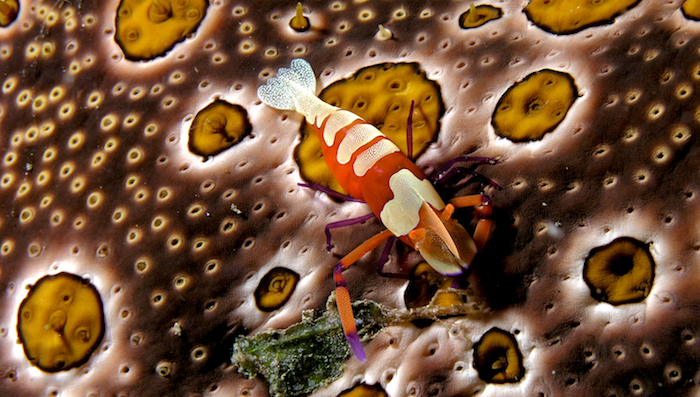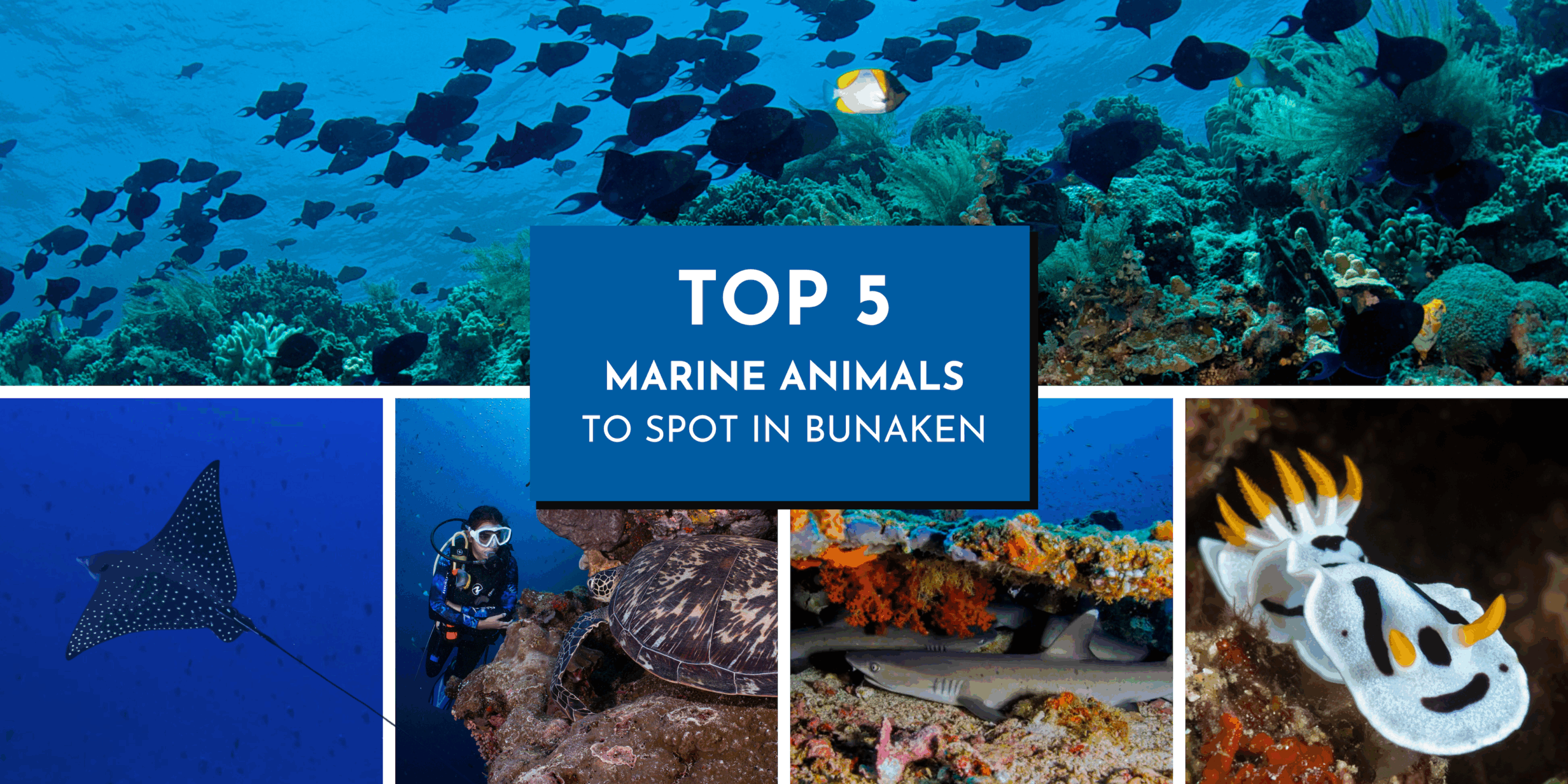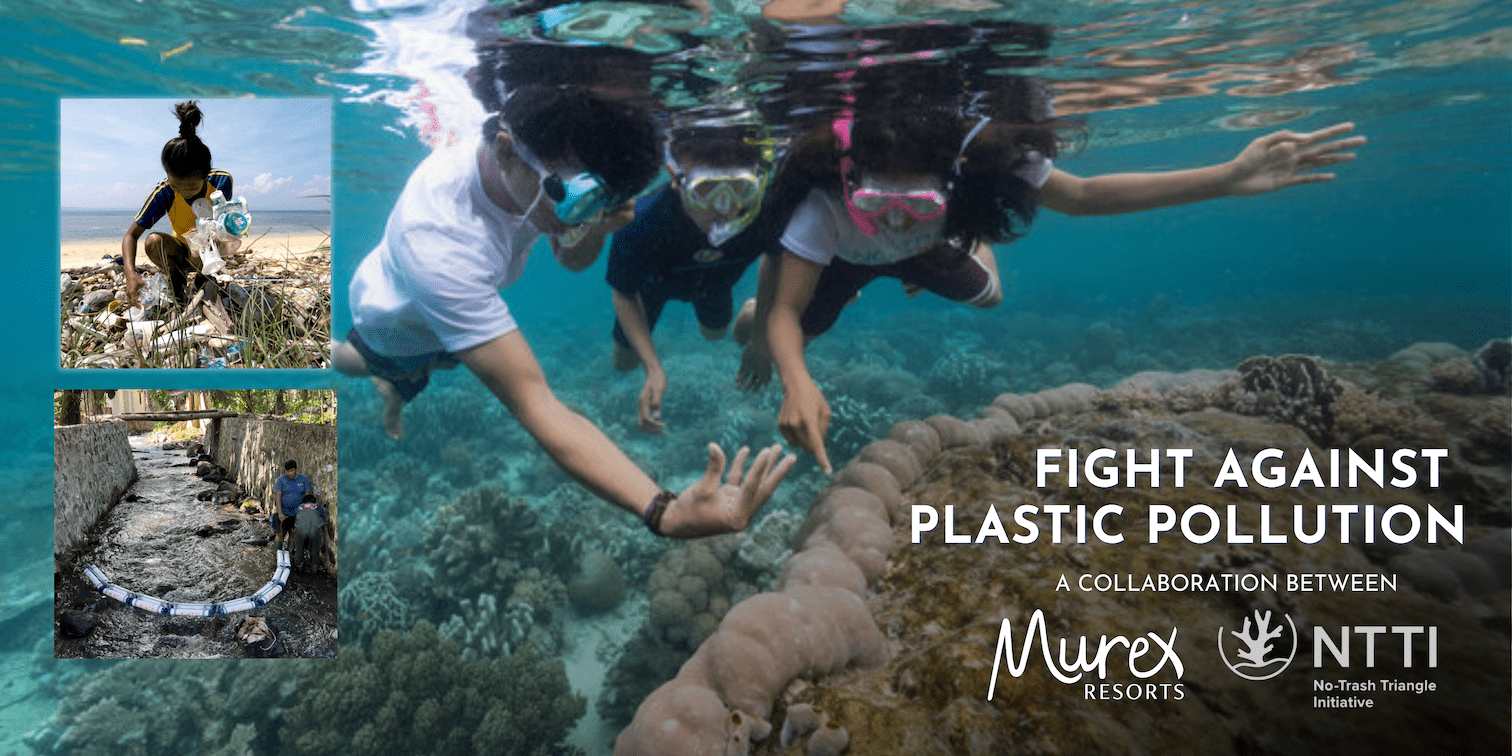
Symbiosis: Marine Matchmaking in North Sulawesi
Symbiosis is a system that has been in place on Earth among various species for millennia and nowhere is it more apparent than in the ocean and on coral reefs. Here are some of our favorite symbiotic match-made marine species which we spot regularly around our dive sites in North Sulawesi.
Sea Cucumbers and Emperor Shrimps
These two species are what we call commensal species. Commensal species form a relationship where one species benefits while the other doesn’t derive a benefit but isn’t harmed by the relationship either. Emperor shrimps utilize sea cucumbers for transport purposes by gripping tightly to the cucumber as it moves along. The shrimp will leave the cucumber on occasions to hunt around for food before climbing back on board to travel to the next feeding spot.
This relationship is not only commensal but also mutualistic which means both species benefit. This occurs when the emperor shrimp cleans parasites from the cucumber – free food for the shrimp and a free cleaning service for the cucumber. We see this relationship in action at all of our dive sites in the Bunaken Marine Park, Manado Bay and around Bangka Island.

Emperor shrimps live in symbiosis with sea cucumbers
Nudibranch (Ceratosoma) and Emperor Shrimps
Emperor shrimps are the hitchhikers of the marine world. When they are not riding on sea cucumbers they can often be spotted onboard nudibranch. One of the most common species we spot them on around North Sulawesi is the ceratosoma nudibranch. The shrimp uses the nudibranch for transport in a similar way as it does with sea cucumbers and will also feed on any parasites on the nudibranch – particularly those around the gills and rhinophores.

Emperor shrimps will often “hitch” a ride on nudibranch – the ceratosoma species is a favorite
Decorator Crabs and Sponges
Decorator crabs use sponges to literally decorate their carapaces which gives them perfect camouflage. The decorator crab uses its pincers to snip pieces of the sponge free. The pieces of sponge which are used as decoration continue to survive on the crab and continue filter feeding as they would if still attached to the reef.
Through this particular example of symbiosis, the decorator crab also benefits from the toxins that may be inherent to the species of sponge it chooses and feeds on the algae growing around the sponge. This is termed a mutualistic relationship as the sponge derives a benefit too by being exposed to many feeding opportunities in accordance with the crab’s movements.

Decorator crabs will often use sponges as part of their camouflage
Remoras and Sea Turtles
Remoras are known collectively as “suckerfish” due to their ability to attach themselves to larger species including turtles and dugongs. When diving in the Bunaken Marine Park we see countless turtles in single dives and many of the larger individuals will have a remora – or even two, attached to them.
The remora uses the turtle for numerous reasons including protection from predators, transportation and they also feed on scraps when the turtle is feeding.

Around Bunaken Marine Park remoras are often seen attached to sea turtles
Moray Eels and Cleaner Shrimp
My, what big teeth you have! For such a small species, cleaner shrimps are extremely brave! They are often spotted cleaning the teeth of moray eels – even entering their mouths to do so. The moray eel receives a dental overhaul while the cleaner shrimp receives a meal of parasites and food scraps. This is a wonderful example of symbiosis which we see at almost all of our dive sites.

Cleaner shrimp will often clean the teeth, around the eyes and gills of moray eels.
Sand Gobies and Blind Shrimps (Pistol Shrimps)
One of the most unique and fascinating examples of symbiosis we see at our sandy dive sites is the relationship between the pistol shrimp (also known as the blind shrimp) and gobies. The shrimp will work tirelessly to dig a burrow while the goby sits inside the entrance keeping guard. The shrimp is blind and without the goby watching over it would be highly susceptible to predators.
If a predator approaches the goby will twitch its tail, signalling danger to the shrimp which then retreats into the burrow. In return for protection the goby receives a place to rest out of sight of predators and a burrow in which to place eggs at breeding time.

Gobies and blind shrimps have a unique, symbiotic relationship
Passport to Paradise with Murex Resorts
The diversity of marine life which we see when diving North Sulawesi is phenomenal. These are just a small selection of the symbiotic relationships which we spot on our reefs on a daily basis. Would you like to see more? Are you planning your next dive trip?

Join us for a Passport to Paradise and dive 3 distinct locations in North Sulawesi
Why not join us on a Passport to Paradise and dive three distinct North Sulawesi destinations in one incredible holiday: Bunaken -> Bangka -> Lembeh. Dive Bunaken’s staggering coral walls and lose count of the number of turtles you see in a single dive; swim through schools of fish as you explore the kaleidoscopic reefs around Bangka Island and experience the world’s best muck diving in the Lembeh Strait.
Boat diving transfers mean no wasted travel time, no gear drying or packing – just dive your way from resort to resort and let us take care of the logistics. For more information about our rates or to make a reservation for Murex Bangka, Murex Manado, combination stays or Passport to Paradise, contact us on: reservations@murexresorts.com.




